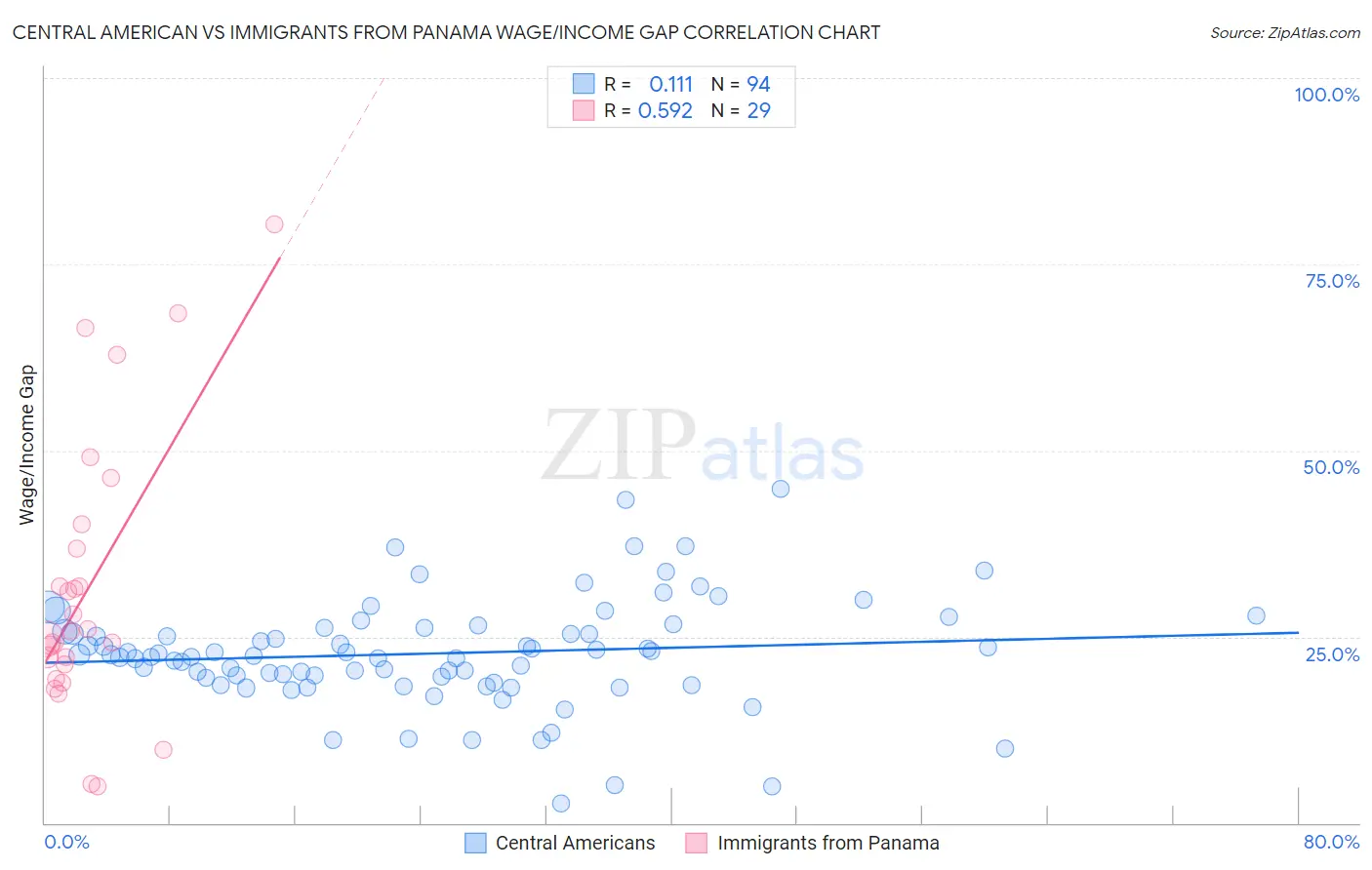Central American vs Immigrants from Panama Wage/Income Gap
COMPARE
Central American
Immigrants from Panama
Wage/Income Gap
Wage/Income Gap Comparison
Central Americans
Immigrants from Panama
23.1%
WAGE/INCOME GAP
99.8/ 100
METRIC RATING
82nd/ 347
METRIC RANK
23.4%
WAGE/INCOME GAP
99.6/ 100
METRIC RATING
88th/ 347
METRIC RANK
Central American vs Immigrants from Panama Wage/Income Gap Correlation Chart
The statistical analysis conducted on geographies consisting of 503,863,449 people shows a poor positive correlation between the proportion of Central Americans and wage/income gap percentage in the United States with a correlation coefficient (R) of 0.111 and weighted average of 23.1%. Similarly, the statistical analysis conducted on geographies consisting of 221,125,355 people shows a substantial positive correlation between the proportion of Immigrants from Panama and wage/income gap percentage in the United States with a correlation coefficient (R) of 0.592 and weighted average of 23.4%, a difference of 1.3%.

Wage/Income Gap Correlation Summary
| Measurement | Central American | Immigrants from Panama |
| Minimum | 2.7% | 5.0% |
| Maximum | 44.8% | 80.4% |
| Range | 42.2% | 75.4% |
| Mean | 22.7% | 31.5% |
| Median | 22.5% | 25.7% |
| Interquartile 25% (IQ1) | 19.5% | 20.3% |
| Interquartile 75% (IQ3) | 26.1% | 38.5% |
| Interquartile Range (IQR) | 6.6% | 18.2% |
| Standard Deviation (Sample) | 7.2% | 18.6% |
| Standard Deviation (Population) | 7.2% | 18.3% |
Demographics Similar to Central Americans and Immigrants from Panama by Wage/Income Gap
In terms of wage/income gap, the demographic groups most similar to Central Americans are Bermudan (23.1%, a difference of 0.0%), Immigrants from Africa (23.2%, a difference of 0.29%), Salvadoran (23.0%, a difference of 0.47%), Immigrants from Nicaragua (23.0%, a difference of 0.54%), and Nigerian (23.0%, a difference of 0.62%). Similarly, the demographic groups most similar to Immigrants from Panama are Marshallese (23.4%, a difference of 0.090%), Nicaraguan (23.4%, a difference of 0.10%), Arapaho (23.5%, a difference of 0.24%), Yuman (23.3%, a difference of 0.32%), and Cheyenne (23.3%, a difference of 0.37%).
| Demographics | Rating | Rank | Wage/Income Gap |
| Fijians | 99.9 /100 | #75 | Exceptional 22.9% |
| Ecuadorians | 99.9 /100 | #76 | Exceptional 22.9% |
| Africans | 99.9 /100 | #77 | Exceptional 22.9% |
| Nigerians | 99.9 /100 | #78 | Exceptional 23.0% |
| Immigrants | Nicaragua | 99.9 /100 | #79 | Exceptional 23.0% |
| Salvadorans | 99.9 /100 | #80 | Exceptional 23.0% |
| Bermudans | 99.8 /100 | #81 | Exceptional 23.1% |
| Central Americans | 99.8 /100 | #82 | Exceptional 23.1% |
| Immigrants | Africa | 99.8 /100 | #83 | Exceptional 23.2% |
| Cubans | 99.7 /100 | #84 | Exceptional 23.3% |
| Immigrants | Cambodia | 99.7 /100 | #85 | Exceptional 23.3% |
| Cheyenne | 99.7 /100 | #86 | Exceptional 23.3% |
| Yuman | 99.7 /100 | #87 | Exceptional 23.3% |
| Immigrants | Panama | 99.6 /100 | #88 | Exceptional 23.4% |
| Marshallese | 99.6 /100 | #89 | Exceptional 23.4% |
| Nicaraguans | 99.6 /100 | #90 | Exceptional 23.4% |
| Arapaho | 99.6 /100 | #91 | Exceptional 23.5% |
| Immigrants | Honduras | 99.5 /100 | #92 | Exceptional 23.5% |
| Immigrants | Cabo Verde | 99.5 /100 | #93 | Exceptional 23.6% |
| Hondurans | 99.5 /100 | #94 | Exceptional 23.6% |
| Cape Verdeans | 99.4 /100 | #95 | Exceptional 23.6% |